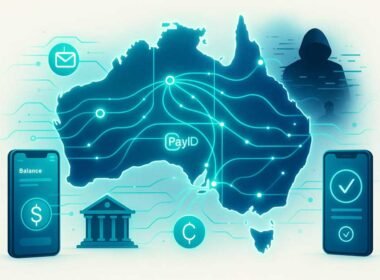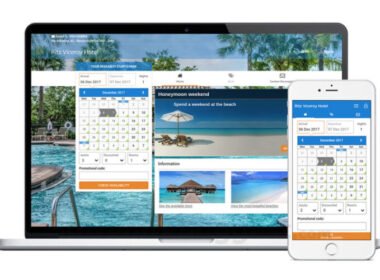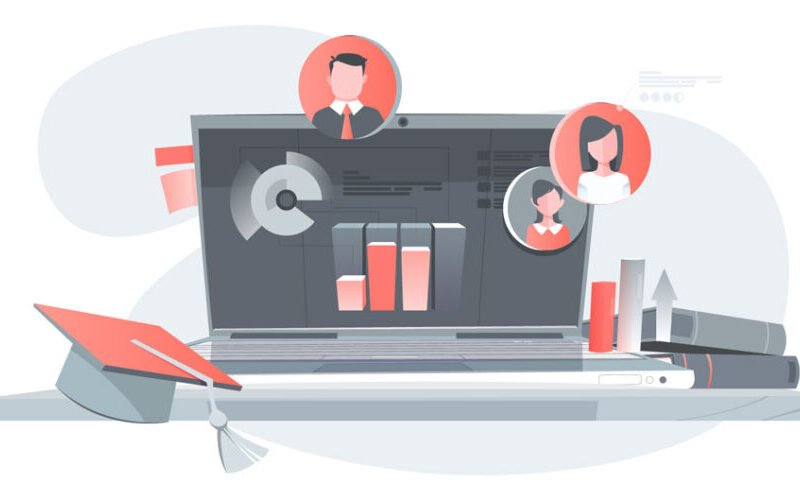Education-focused design agencies play a crucial role in improving how students engage with learning content. By understanding both instructional needs and user experience principles, these agencies create digital tools that are not only visually appealing but also highly functional. Their work ensures that educational materials are easier to navigate, more accessible, and tailored to various learning styles.
An education design agency like Gapsy Studio combines design expertise with deep knowledge of educational systems. This combination allows them to craft platforms that support better comprehension, retention, and motivation. Whether it is an e-learning platform, an educational app, or a digital classroom interface, every element is designed to enhance user engagement and effectiveness.
Moreover, education-focused design agencies emphasize usability testing and feedback from real learners and educators. This ongoing process of refinement leads to continuous improvement, ultimately supporting better academic performance and more meaningful learning experiences for all users involved.
What Is an Education Design Agency and Why Does It Matter?
An education design agency is a specialized creative partner that focuses on developing learning tools, digital platforms, and visual experiences tailored for educational environments. These agencies blend design principles with pedagogical knowledge to produce resources that support both teaching and learning goals. Their work often includes websites, mobile applications, e-learning systems, and interactive content designed to engage students and educators alike.
The importance of an education design agency lies in its ability to make learning more effective and accessible. By creating intuitive layouts, clear information flow, and visually appealing content, these agencies help reduce cognitive load and improve user understanding. This is especially valuable in today’s digital classrooms, where design plays a key role in maintaining student interest and promoting comprehension.
Incorporating the right design strategies into educational materials can enhance motivation, boost retention, and create a more inclusive learning environment. For schools and institutions, partnering with such an agency offers lasting educational benefits.
What Do Students and Educators Expect from Digital Education Tools?
Students and educators increasingly rely on digital education tools to support learning inside and outside the classroom. As expectations rise, these tools must provide more than just basic functionality. Users now look for intuitive interfaces, personalized learning paths, and content that adapts to different skill levels and learning speeds.
Educators expect digital tools to be reliable, accessible, and aligned with curriculum goals. Features such as performance tracking, automated grading, and collaborative functions help teachers manage classrooms more efficiently and engage students more effectively.
Students, on the other hand, expect digital tools to be interactive, visually engaging, and easy to navigate. They value real-time feedback, gamified elements, and mobile compatibility that allows learning to continue beyond the traditional classroom setting.
An education design agency plays a key role in meeting these expectations by creating digital tools that are user-centered, inclusive, and designed specifically to enhance the learning experience for all users.
How Does Gapsy Studio Approach Education Design Projects?
Gapsy Studio approaches education design projects with a thoughtful and research-driven process that focuses on the needs of both learners and educators. Their team begins each project by studying the educational goals, audience types, and platform requirements. This early research helps shape a clear strategy that guides the design process from concept to final delivery.
As an experienced education design agency, Gapsy Studio pays close attention to usability, accessibility, and visual clarity. Their designers work closely with educators, content developers, and stakeholders to ensure that every element supports learning outcomes. They prioritize intuitive navigation, responsive layouts, and engaging visuals that hold the attention of students across different age groups.
Testing is another essential part of their approach. Gapsy Studio gathers feedback from real users to refine their designs and improve functionality. This collaborative and iterative process results in digital tools that are both effective and user-friendly, helping educational organizations reach their full potential.
Which UX Principles Work Best in Educational Platforms?
User experience principles play a vital role in the success of educational platforms. The best designs focus on clarity, consistency, and user engagement. These principles ensure that students and educators can navigate the platform with ease and confidence, leading to better outcomes.
Clear information hierarchy, intuitive layout, and minimal distractions help users stay focused on learning tasks. Interactive features, such as quizzes, progress tracking, and feedback tools, support active participation and motivation. Responsive design is also important, allowing users to access content across various devices, including tablets and smartphones.
Accessibility is another key consideration. Educational platforms must be inclusive, offering features like readable fonts, color contrast, and support for assistive technologies. An experienced education design agency applies these UX principles thoughtfully to meet the unique needs of learning environments.
By combining strong design with educational insight, these platforms become more effective, enjoyable, and adaptable for a wide range of users and learning goals.
How Can Visual Design Enhance the Learning Experience?
Visual design plays a powerful role in shaping the learning experience. When applied correctly, it helps communicate information clearly, maintain attention, and support long-term memory. Effective visual elements include diagrams, icons, color systems, and typography that guide the learner through content in a meaningful way.
By reducing visual clutter and organizing information logically, learners are better able to process and understand complex topics. Well-structured layouts make educational materials more approachable and less overwhelming, especially for younger audiences or those with learning differences.
An education design agency uses visual design not only to make platforms look appealing but also to improve how learners interact with educational content. Visual cues can highlight key ideas, show progress, and encourage exploration. These design choices improve comprehension and make digital learning more effective.
In today’s education systems, strong visual design is more than decoration—it is a necessary tool for deeper engagement and improved learning outcomes.
What Are Common Challenges in EdTech Design—and How Are They Solved?
Designing for EdTech comes with unique challenges that require thoughtful solutions. One common issue is balancing complex content with a simple and clear interface. Overloading users with information can reduce engagement and learning effectiveness. Designers must organize material in a way that is both accessible and easy to navigate.
Another challenge is ensuring the platform works well across various devices and internet speeds. Responsive design and performance optimization are key in reaching a broad audience, including students in underserved areas. Accessibility is also critical, requiring features that support learners with visual, auditory, or cognitive differences.
An experienced education design agency addresses these challenges by focusing on user-centered design. This includes research, user testing, and collaboration with educators. Through careful planning and continuous feedback, they develop solutions that support learning goals while improving usability.
Why Accessibility and Responsiveness Matter in Education Design
Accessibility and responsiveness are essential in education design because they ensure equal learning opportunities for all users. Digital platforms must be usable by individuals with diverse needs, including those with disabilities, limited internet access, or older devices. Without accessible features, some learners may struggle to interact with content or complete tasks effectively.
Responsiveness allows educational tools to function smoothly on different screen sizes, such as phones, tablets, and laptops. This flexibility supports learning in various environments—at home, in class, or on the go. A responsive design improves user experience and encourages consistent engagement across devices.
An experienced education design agency understands how to incorporate accessibility standards and responsive layouts into every project. Features like keyboard navigation, screen reader support, and adaptive visuals help make platforms inclusive and user-friendly.
Who Can Benefit from an Education Design Agency?
An education design agency offers value to a wide range of organizations and individuals involved in learning and development. Schools, universities, and online education providers can benefit by improving how their digital platforms and materials engage students and support academic goals. These agencies create user-friendly, accessible designs that make learning more effective.
Educational startups and technology companies also gain advantages by partnering with experts in both design and education. An education design agency helps bring innovative ideas to life while ensuring they meet the practical needs of learners and educators.
Nonprofits, government programs, and corporate training departments can also benefit. Whether developing e-learning courses or digital resources for professional development, these agencies design tools that promote better understanding and user engagement.
Final Thoughts: Is Your Learning Platform Designed for Real Impact?
A successful learning platform must do more than deliver content—it must create real impact by supporting engagement, understanding, and progress. Design plays a critical role in shaping how users interact with educational tools. If a platform is difficult to navigate, visually confusing, or not accessible to all learners, its effectiveness is limited.
To achieve meaningful results, every element should be guided by user needs and learning goals. Clear structure, responsive design, and inclusive features help users stay focused and motivated. A well-designed experience encourages active participation and long-term retention.
Partnering with an education design agency can help ensure that your platform meets these high standards. These professionals combine design expertise with educational insight to create tools that are practical, appealing, and results-driven.










